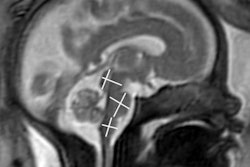
Toys, distraction aids, and themed decorations in waiting areas are no longer used to calm anxious patients before a scan at Nottingham Children's Hospital, and personal protective equipment (PPE) has resulted in far fewer smiles and less interaction, according to a presentation at the virtual UK Imaging & Oncology Congress (UKIO 2021), which began on 7 June.
"Parents/carers are anxious about attending hospital, resulting in frustration and delay of care and diagnosis," stated pediatric radiographers Angela Staley and Vanessa Waspe. "Only one parent/carer is allowed to attend with the patient, unless there are exceptional circumstances, increasing anxiety. Due to social distancing, children are alone for their examination when appropriate, once details have been checked."
Attendance rates are falling, and in a bid to boost attendance, parents/carers are now contacted prior to appointments, to aid attendance. Also, pressure is growing from referrers due to the backlog of scans, they noted in a poster presentation at UKIO 2021.
 Before COVID-19, there were many more smiling faces around in the pediatric radiology department at Nottingham Children's Hospital. From right to left: radiographers Lauren Padgett and Clare Cormell, consultant paediatric radiologist Dr. Kath Halliday, radiographers Angela Staley and Vanessa Waspe, and ultrasound applications specialist Jackie Chambers. Photo taken in August 2018, courtesy of Canon.
Before COVID-19, there were many more smiling faces around in the pediatric radiology department at Nottingham Children's Hospital. From right to left: radiographers Lauren Padgett and Clare Cormell, consultant paediatric radiologist Dr. Kath Halliday, radiographers Angela Staley and Vanessa Waspe, and ultrasound applications specialist Jackie Chambers. Photo taken in August 2018, courtesy of Canon.Some important advantages have resulted from the new ways of working, however.
"We now have control of our workflow and workload through the children's x-ray department," Staley and Waspe wrote. "Communication with our service users has improved as we have to communicate about changes."
Relationships have improved because service users now tend to recognize the limitations facing hospital staff and respect the decisions made, and the greater control over appointments has led to a constant steady flow of patients, they added.
Before and during lockdown
Prior to March 2020, parents and carers at Nottingham were always encouraged to be involved with exams. Toys, books, and children's seating were available in waiting areas, rewards were given after successful examinations, and the waiting area was always decorated with an appropriate theme depending on the time of year.
"Minimal PPE was required. We had large clinics with a walk-in service available every day. Patients were allowed to attend early, along with family members and siblings," the authors pointed out.
The main drawback was the lack of control over workflow and capacity, and waiting rooms could become very busy and overcrowded.
During lockdown, patient numbers requiring imaging was very low, and there were very few COVID-19-positive pediatric patients. Radiographers had to become confident in donning and doffing PPE, and testing was a priority.
"Only acute, urgent, and oncology patients were imaged, all routine patients and screening were cancelled," Staley and Waspe noted. "Introduction of the recommended PPE changed regularly, and minimal NAI (non-accidental injury) skeletal surveys were carried out due to very few referrals."
Overall impact of COVID-19
Staff feel they are not getting job satisfaction due to PPE limiting interactions with patients and families and being unable to provide a familiar and inviting environment, according to the authors. But they ended on a positive note.
"Children are resilient and cope with change," they wrote. "Sometimes it is good to look at the ways you work and the patient pathways and see how things can be improved for patients and staff."



















